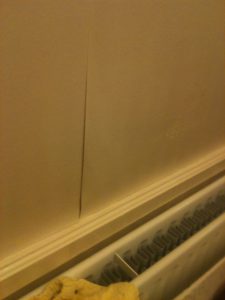Wallpaper
Now, �A lot of homes in London have wallpaper on the walls. Sometimes this is done out of preference, but not always. If you have read my previous blogs, I have briefly gone over the subject of lining paper verses plastered walls.
In London, the architecture dates back hundreds of years, and history hasn’t always been kind to its foundations. �The homes have had to endure things which they weren’t built to endure. Only 70 odd years ago, bombs were shaking the foundation all over London, and more recently you have the Tube, which send continual vibrations up through the �foundations. But this is not a history lesson, or an engineering lesson for that matter. The point I’m trying to make, is that in London, the foundations of your home do occasionally get shaken, which can lead to cracked walls, and weakened walls. Also due to the age of your home, the plaster itself may have become weak over time, �and started to flake away.
The cheapest, though in my view not always the most effective, way to deal with this is lined or wallpapered walls.
But this carried its own problems. If not done correctly, or if painted to much, you can get split seams, bubbling, or it can come away from the wall entirely.

Above I have placed a picture that shows wallpaper that is now coming away from the wall. As you can see, the wallpaper is right above a radiator. The heat that is expelled from a radiator commonly causes wallpaper above to shrink, the glue to dry out, and come away from the wall. This is one of the hassles of having wallpaper. When being put up, if it allowed to completely dry naturally before the heating is put back on, it can be prevented for a while, but eventually this will happen.
Especially as most lining paper gets painted more than it should. �Making the paper wet again, and then the heating makes it shrink.
Now, when this happens it can normally be repaired, you can put some wallpaper paste under the loose paper and try to re-stick it, it won’t look perfect, but it will look better than when its hanging off!
Alternatively, you can get it all stripped off, and re-papered. Which would be my recommendation. Further more, I would recommend that once it is stripped off, and we can actually see the state of the walls underneath, you get a�separate�quotation for the re-plastering and skimming of your walls. �As, if your walls are in good condition, its something you may want to look into, as it doesn’t require quite the same upkeep as paper.
